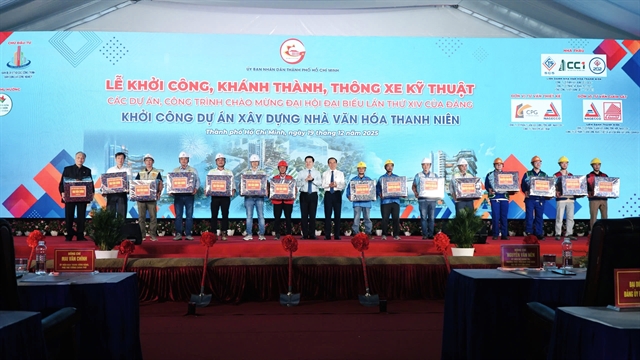 Features
Features
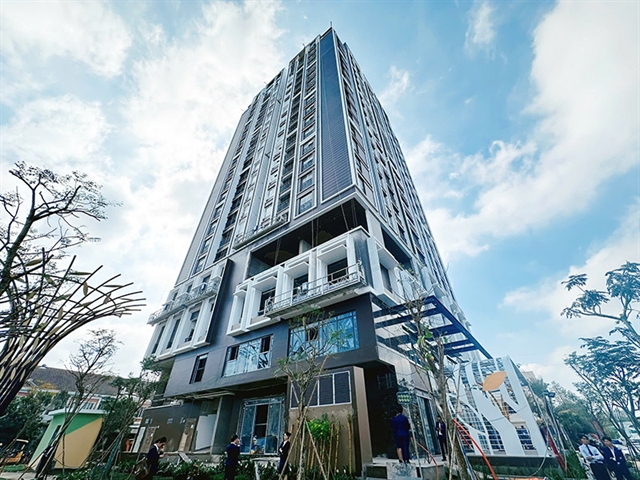
With stunning caves, lakes and waterfalls, the northeastern province of Cao Bằng is a paradise for nature lovers and adventure seekers. Localleaders are making a push to boost tourism. Nguyễn Thanh Hà reports.
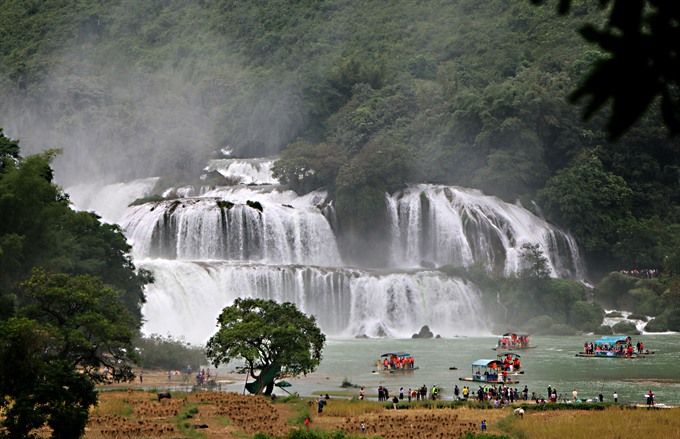 |
| Steady stream: Việt Nam’s Bản Giốc Waterfall receives hundreds of travellers daily. VNS Photo Đoàn Tùng |
By Nguyễn Thanh Hà
Thang Hen Lake in the northeastern province of Cao Bằng is surrounded by rows of mountains, capped by streaks of white clouds.
To get there from Cao Bằng City, one heads to Trà Lĩnh District’s Quốc Toản Village, which is 30 kilometres northeast of the city centre.
The lake’s surface sometimes hides beneath a layer of mist, while the shore is carpeted in smooth green grass and colourful flowers.
Engrossed in such beautiful scenery, it’s easy to ignore the rays of sunlight twinkling on the water. Trees are reflected on the surface, as well as the boats floating lazily around the lake.
In the distance are several stilt houses, silhouetted against the backdrop of mountains.
It’s easy to relax in such a setting.
“I felt like I was in paradise,” Nguyễn Tiến, a member of our group, said.
A local man named Nông Văn Khoảng bumped into us at the water’s edge, suggesting we hire a boat to explore the beauty of Thang Hen Cave. The cave supplies fresh water to the lake, which is emerald green year round compared with other lakes in the region.
According to Khoảng when autumn begins between September and October, water levels in the lake can drop within just three hours, leaving it almost dry.
Many rare hundred-year-old wood trees and beautiful orchids ring the shore, together with wild animal species.
Legend has it that there was a young man named Sung, who was very clever. He passed exams to become a mandarin and was awarded seven days holiday to return home and thank his ancestors for the academic achievement.
At home he married a beautiful girl and forgot to return to work. He was in such a hurry to return to work at the court; he ran through the forest at night. He managed 36 steps before falling against the mountain. He died immediately.
“His 36 footsteps are now the 36 lakes. Where he died is now Thang Hen Lake,” said Khoảng.
The man invited us to his house to enjoy fish fried with chili and shrimp braised with tamarind.
That night we stayed at Khoảng’s house and enjoyed traditional dances and songs of the Tày ethnic group.
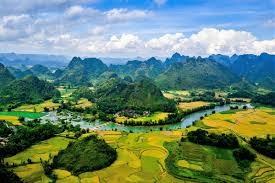 |
| Sight to behold:Cao Bằng’s natural beauty attracts travellers and visitors. |
Between them, "Thang Hen Lake, Pác Bó historical site and Bản Giốc Waterfall each receive between 600-1,000 visitors a day," tour guide Nông Thị Điềm said, adding that "many visitors return multiple times".
The increasing number of travellers and guests to the province has brought stable jobs and income for locals.
Trần Lộc Nam, owner of Eco Cao Bằng homestay, receives 200 visitors per month.
A South Korean man named Kim Roy is passionate about the natural beauty of Bản Giốc Waterfall, but noticed that locals did not fully benefit from the site’s tourism development.
He consulted local authorities and put forward VNĐ60 million to turn a house in Đàm Thủy Village into a homestay managed by the community. Profits would be shared between him and the community.
He has promoted the homestay to attract travellers, which is fully booked every day.
“Cao Bằng has great tourism potential. The provincial tourism sector should focus on preserving and protecting the primeval beauty as well as national identity for sustainable development,” Kim said.
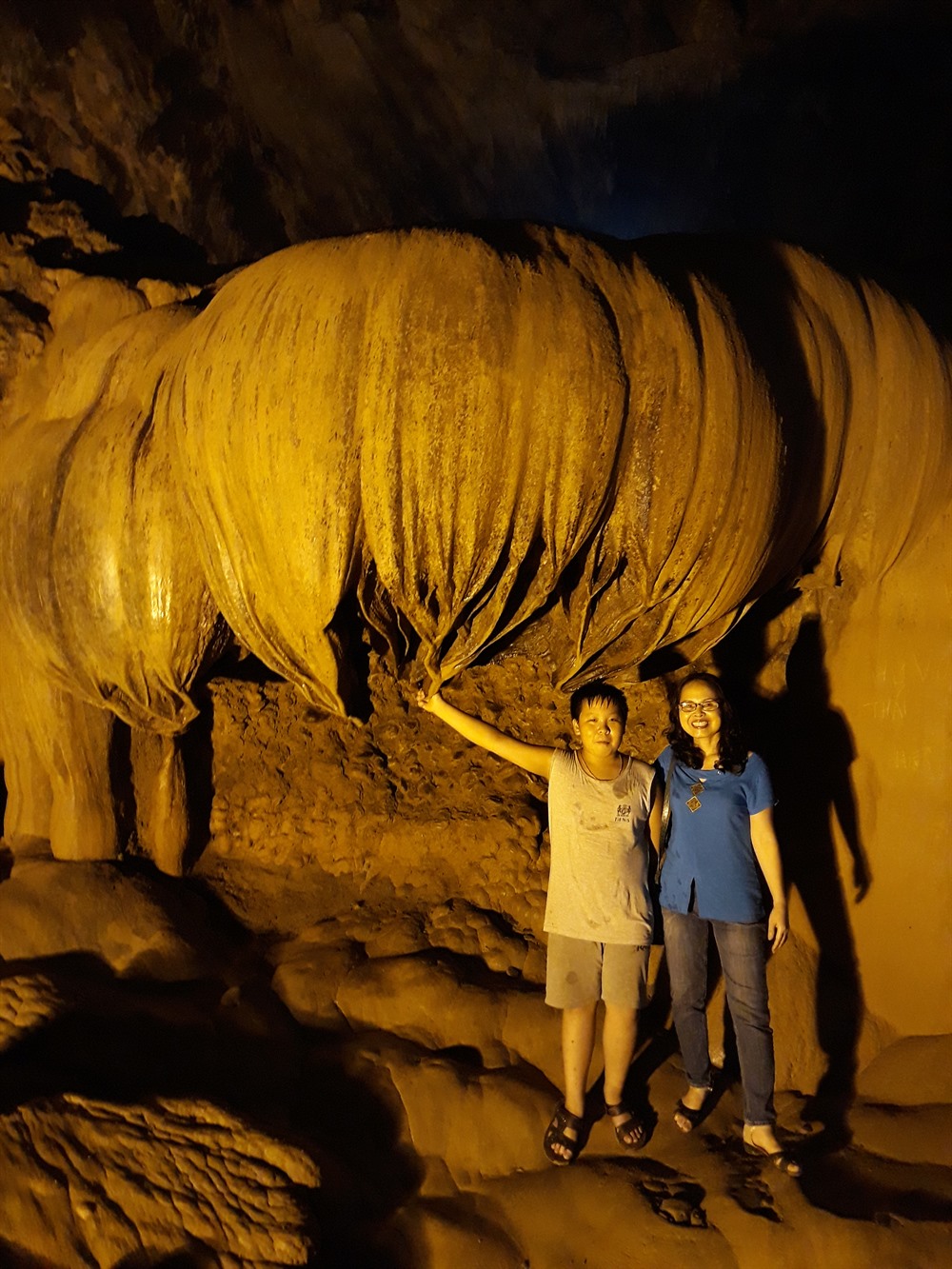 |
| Old rock: Ngườm Ngao is a limestone cave that is estimated to be 300 million years old. Photo giadinhvatreem.vn |
Thang Hen Lake, Thác Bản Giốc, Phia Oắc, Phia Đén and Ngườm Ngao Cave received 1.2 million visitors last year, said Sầm Việt An, director of Cao Bằng’s Culture, Sports and Tourism Department.
The province was expected to receive 1.3 million travellers this year, he said.
Last year, Cao Bằng’s Non Nước Park was recognised as a global Geopark by UNESCO.
The park has an area of more than 3,275 sq.km, linking the province’s nine districts.
It is home to fossils, ocean sediment, volcanic rocks, minerals and karst landscapes, which can give researchers insight into the earth’s history.
The park is well known for its rich biodiversity and many indigenous species of fauna and flora.
With such great tourism potential, the province can develop different kinds of tourism such as discovering diversified cultures of ethnic minorities of Dao, Mông, Sán Chỉ, and Lô Lô; spiritual tourism by visiting famous temples and pagodas of Trúc Lâm Bản Giốc, Trúc Lâm Tà Lung and Kỳ Sầm, said An, noting that those visitors wishing for adventure and trekking should come to Cao Bằng.
Nguyễn Sơn Hà, an official from the Cao Bằng Department of Education and Training said the sector had compiled and published 6,000 documents about the Geopark to deliver to all schools as teaching documents with an aim to promote awareness on protecting and preserving the heritage by people, particularly the young generation.
Deputy chairman of Cao Bằng’s People’s Committee Trịnh Hữu Khang said UNESCO’s recognition is an important push for tourism.
He said that communications and infrastructure linking the province with tourism sites is still inadequate.
“The province has proposed the Government to allow a special rule to co-operate and develop tourism with foreign companies, creating further advantages for international travellers to visit areas bordering China,” said Khang.
Fortunately, last November, the Government allowed the province to build a highway linking Cao Bằng and Lạng Sơn.
Construction on the highway is expected to start this year, said An. VNS
 |
| Sightseers: Hundreds of visitors visit Cao Bằng Province’s historical Pác Bó Cave every day. Photos baocaobang.vn |
 |
| Relaxing: A beautiful view of Thang Hen lake in the mountains of Cao Bằng Province. |
 |
| Crystal clear: Lenin Stream runs through Pác Bó Cave. |



